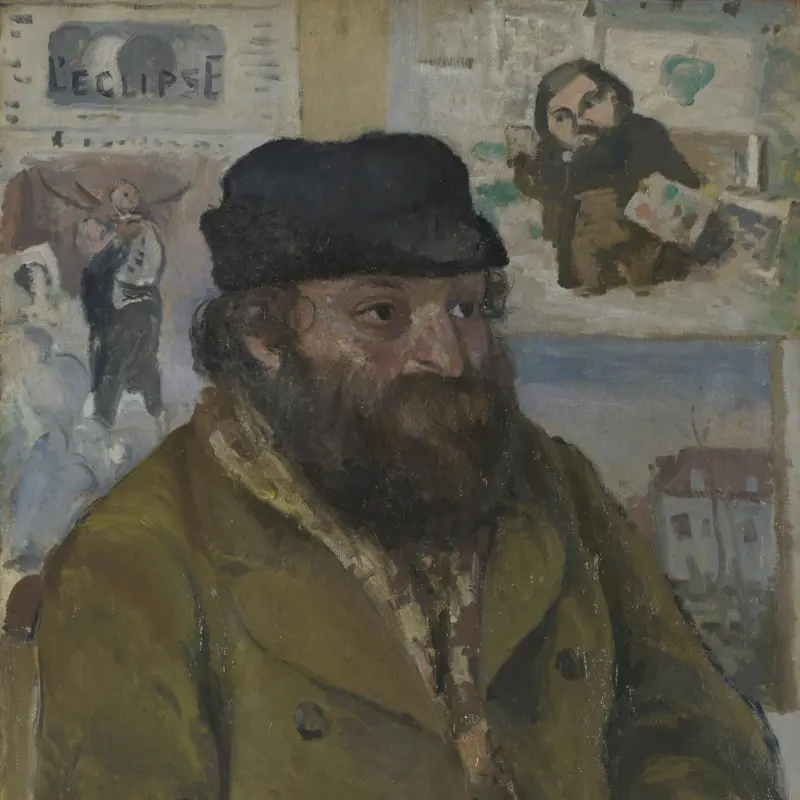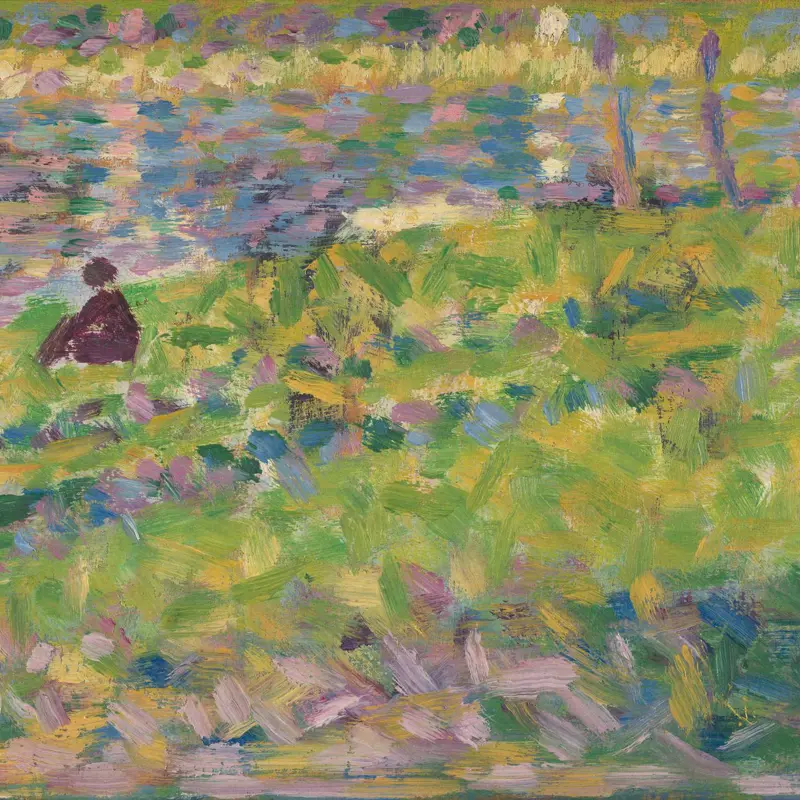Late in the 1800s, French artists wanted to move beyond Impressionism’s fleeting, sketch-like approach. Post-Impressionists used radiant colours and structured forms, introducing greater emotional intensity to their work.
In the early 1870s, Paul Cezanne painted with his friend and mentor, Camille Pissarro. Encouraged by Pissarro’s rural scenes, Cezanne began to create brighter works based on outdoor observation. He exhibited with the Impressionists for the final time in 1877 before returning to his hometown of Aix-en-Provence in southern France. There, the countryside’s dazzling light and rock formations inspired him to paint with rhythmic brushstrokes and small patches of colour.
The following decade, Pissarro met a younger group of avant-garde artists working in Paris, led by Georges Seurat. Influenced by scientific colour theory, Seurat tried to impose a rational order on the Impressionists’ free-form experiments with colour and light. He devised a technique called Pointillism, in which he placed small dots of colour side-by-side on the canvas. When viewed at a distance, they create luminous forms.
Ferdinand Hodler and Akseli Gallen-Kallela were respectively from Switzerland and Finland, where they painted symbolic landscapes that helped to define their nations’ identities in the modern world.


























